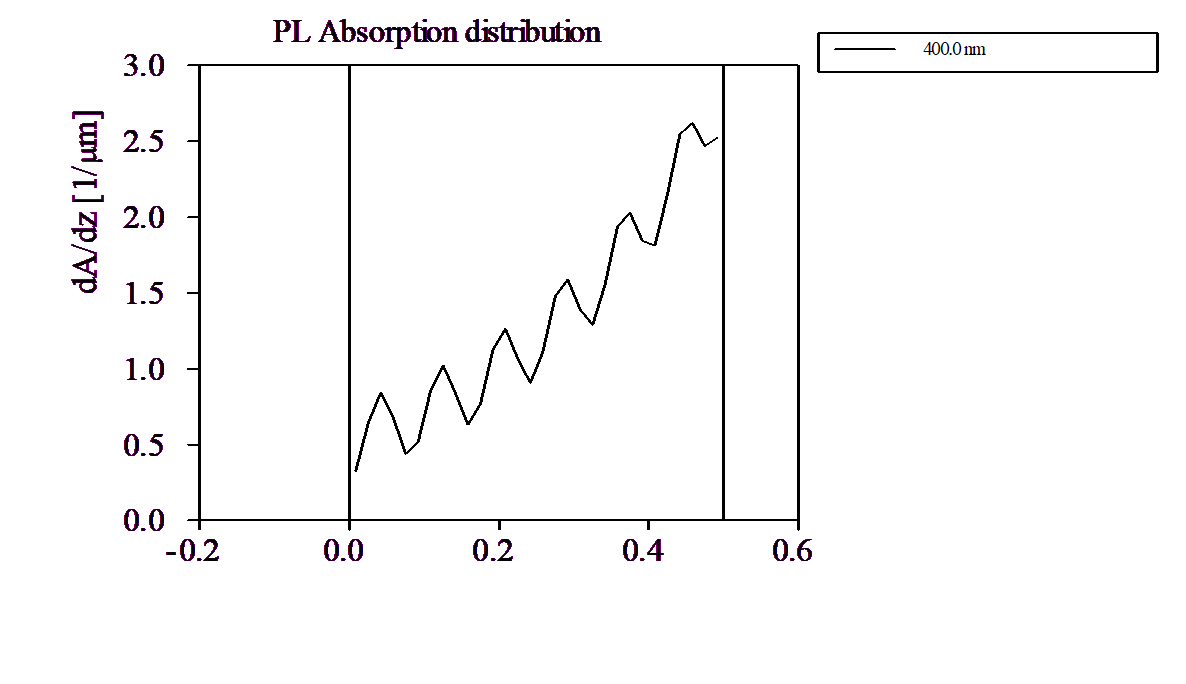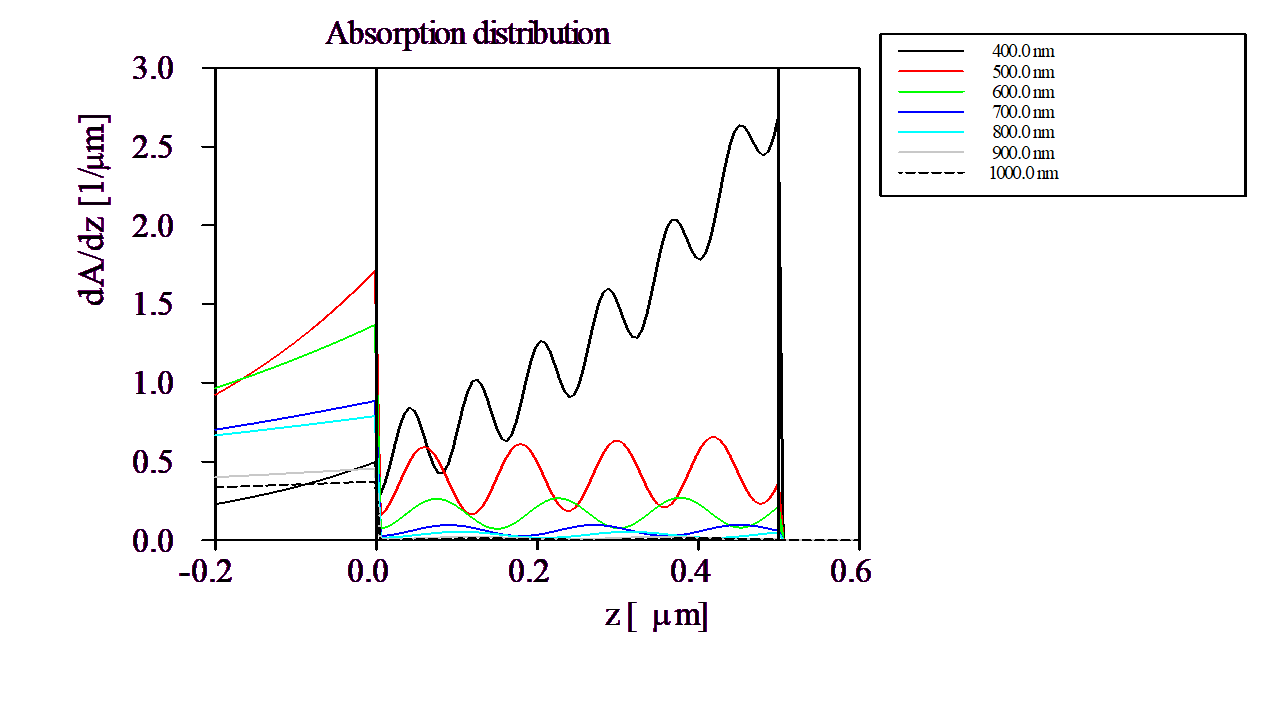The first step of the PL spectrum computation is the determination of the light source distribution. To do this, the luminescent layer must be specified first. Then the incident radiation is characterized by its wavelength, angle of incidence and polarization. According to these settings, the depth profile of the absorption is calculated.
For the 500 nm porous silicon layer on silicon one gets for 400 nm wavelength (normal incidence of light) the following distribution (using 20 points):

The illumination is incident from the right in this picture. The silicon substrate is left to the point z=0. Note the narrow interference pattern.
With the SCOUT object 'Absorption distribution' (see the help on distributions) the absorption pattern for higher wavelengths are computed as well. These exhibit even more pronounced interference structures in the local absorption:

Sampling the luminescent layer using 20 points means to work with 20 light sources in the following. Each light source emits proportional to the corresponding absorbed fraction of the incoming beam.